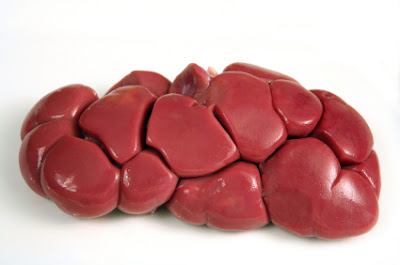In the past, dogs were routinely vaccinated against just about anything we could think of, on the off chance that they might be exposed to that disease, in which case the vaccine should protect the dog.
Today, we recognize that vaccines can sometimes have a downside as well.
There can be side effects with any medication and vaccines are no exception.
Anaphylactic/Allergic Reactions
By far the most common adverse reaction to vaccinations in dogs is an allergic reaction.
- A normal reaction to vaccines includes mild lethargy and soreness. A mild fever may also occur and these symptoms are generally not serious.
- Vaccine reactions can occur directly after the administration of a vaccine or within 48 hours later.
- Hives, swelling of the face, muzzle and ears and sometimes nausea are symptoms seen with an allergic reaction.
- In more severe cases, the dog may go into shock and may also die suddenly. Fortunately, this complication is extremely rare.
Which Dogs are Most Likely to Have Adverse Reactions to Vaccines?
Puppies and young dogs are most likely to suffer adverse reactions to a vaccination. Small breeds of dogs are more likely to be affected than larger breeds.
Administering multiple vaccinations at the same time is more likely to elicit an adverse reaction.
However, interestingly, multi-valent vaccines (vaccines which protect against more than one disease in the same vaccine) do not appear to cause an increase in the incidence of adverse reactions.
Immune-Mediated Disease Linked to Vaccines
At this time, the link between immune-mediated disease and vaccinations administered to dogs is unclear. However, there is some evidence that vaccinations can at least predispose a pet to developing immune-mediated disease.
More research is needed in this area but there is some concern that vaccination could have a long-term effect on the immune system, making it important to minimize unnecessary vaccinations.
Vaccine Preservatives, Mercury and Thiomerosal
Some vaccinations contain various preservatives, including mercury and thiomerosal (a compound containing 49.6% mercury by weight).
Preservatives are added to vaccines in order to reduce the potential for growth of micro-organisms such as bacteria or fungi in the event of an accidental contamination of the vaccine vial. It should be noted that not all vaccines contain mercury or thiomerosal however.
In human medicine, there have been concerns raised about the safety of mercury and thiomerosal in vaccinations.
It was believed that these substances may be linked to the development of the development of autism or other neurodevelopmental disease. However, studies performed to investigate this causal relationship have failed to prove there is a positive correlation, according to the FDA publication Questions About Vaccines. Similar studies in animals have also failed to show a link between adverse reactions in pets and mercury or thiomerosal-containing vaccines to date.
This continues to be a controversial and widely debated topic, however.
Adjuvants
Adjuvants are substances that are added to vaccines to increase the body’s response to the vaccine and lead to better protection with smaller quantities of the biological portion of the vaccine.
Adjuvants have been implicated in causing cancer in pets.
This is another reason that unnecessary vaccinations should be eliminated from the vaccination protocol for individual animals. Currently, some vaccinations are manufactured that are free of adjuvants and many veterinarians consider these safer than adjuvanted vaccines.
Why Administer Vaccines to Dogs and Cats with the Risks Involved?
Despite the risks involved with vaccinating dogs and cats, vaccines still provide documented benefits which in most cases outweigh any risks involved with their administration.
However, vaccines protocols for an individual animal must assess the relative risk for that animal and only vaccines which can claim the potential for more benefit than risk should be administered.
***
Lorie Huston has been practicing veterinary medicine for over 20 years. Besides a successful career in a busy small animal hospital in Providence, RI, Lorie is also a successful freelance writer specializing in pet care and pet health topics.
Currently, she is the feature writer for the Pet Care section at Suite101.com and the National Pet Health Examiner at Examiner.com. Lorie also publishes her own blog, The Pet Health Care Gazette and manages an increasingly popular facebook page, The Voice of Pet Care.
Articles by Dr. Huston:
Lyme Is Lame (Pun Intended)
The Ticking Bomb
Don't Let Heartworm Become A Heartbreak!
Summer Perils: Blue-green Algae
Your Dog And Leptospirosis
Canine Parvovirus
Canine Distemper Virus
Why Is My Dog So Itchy? Top 5 Causes Of Itching In Dogs
Further reading:
The truth about vaccines: Dog and cat owners be warned
Dog Vaccines: Are You Over-Vaccinating?
To Vaccinate or Not to Vaccinate Your Dog or Cat: Which is Safest?
Vaccination Concerns and Potential Side Effects for Dogs and Cats
Vaccinations for Your Dog: A Complex Issue
Related articles:
To Booster Or Not To Booster












